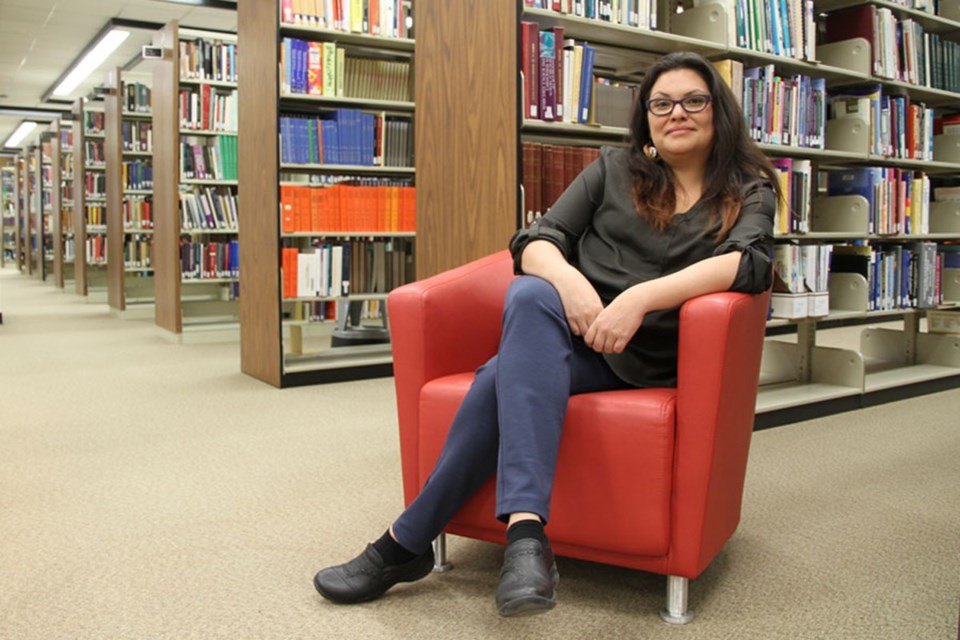The Saskatchewan Aboriginal Storytelling project is once again underway for the entire month of February.
Now celebrating its 20th anniversary, the project aims to accomplish what it has in previous years.
"The purpose is to promote, protect and preserve Indigenous stories and storytellers," said Project Coordinator for the SAS project, Jessica Generoux, in an interview with Yorkton This Week.
Last year the project doubled it's participants from 15,000 to 30,000 and Generoux expects no less this year.
"We're definitely expecting to see the numbers rise – they rise every year," said Generoux, noting, "they were pretty high during COVID because the impact of virtual programming was huge – it opened the door for a lot of people to participate easily from their phones and laptops."
Generoux said the partnerships with libraries and other hosts throughout the province have had a positive impact on the project.
"We have multiple partnerships within the host locations – the host locations are the regional libraires that participate by offering projects, programs or sessions," said Generoux, adding, "they've been working on generating more community partnerships to increase the awareness and engagement in the project."
"Over the years I've looked over the statistics and the program has definitely grown in the amount of host sessions as well as schools and libraires that partner with SAS and LSAP (Library Services for Saskatchewan Aboriginal Peoples) as well," said Generoux.
Generoux said the project as a whole has had an positive impact.
"The impact has been pretty enormous in the way that it has established Indigenous programming in public libraires – it also has increased Indigenous education in public schools and has generated relationships and engagement with Indigenous communities and Indigenous knowledge keepers as well."
"We were able to obtain a recognition from the Government of Saskatchewan declaring Feb. official story telling month," said Generoux, adding, "not only does the SAS project engage in Indigenous story telling, but the month also recognizes the importance of it in Sask. We have a month proclomation as well – and that has taken a few years to work with government in understanding and recognizing Indigenous storytelling to the cultural landscape in Sask."
This year's SAS project features 60 story tellers from throughout the province with representation from the Dene, Cree, Metis and Saulteaux nations.
Generoux noted that along with the traditional story tellers younger story tellers are also emerging from the project too.
"We're seeing a lot of younger story tellers coming out and sharing stories in a different type of platform – creative writers, playwrights, actors, video game developers, comedians and authors."
Generoux said the project is important to Sask. for multiple reasons.
"For me it is a role that I take very seriously because I understand and recognize the importance of the cultural revitalization within Sask. and each generational healing aspect of storytelling and how we are able to learn and connect with our cultural teachings and spirituality as well as our languages through storytelling."
Additionally, the story tellers themselves carry the same sentiments.
"The stories that we tell are our own stories of creation — everything in our culture has a different story — from an animal, to a stone, to a cloud, to a human being – there's a story for everything," said Nina Wilson, a story teller for the project from Kahkewistahaw First Nation who has been involved with the project since 2008.
Though February is dedicated as SAS month, Wilson said that story telling actually starts earlier.
"Story telling time starts from the first snowfall," said Wilson, adding, "we didn't follow Gregorian calenders – we followed the moon — we followed the moon changes and so in the beginning of winter the moon is a certain way and we would start in that time telling those stories."
"When it's winter and the snow falls — the time when people settle down, when they're spending a lot of time together — this is the time when we would study – this was our schooling," said Wilson.
"So we go through the months where there's snow on the ground and we tell the stories because all the stories teach us what to do in the summer, they teach as what to do in the spring, they teach us what to do in the fall – stories are not just things that are passing the time, these are teaching us how to be," said Wilson.
"It helps remind me 'keep utlizing this muscle – memory muscle – keep utlizing it and teach others about who we are but mostly to remind our children and our young people and our adults and our elders that these are good'."
For more information on SAS month and to view the full list events, visit .




